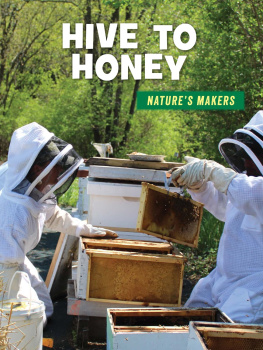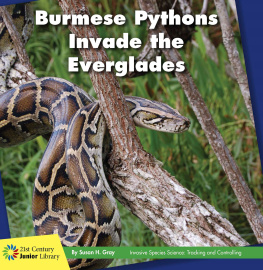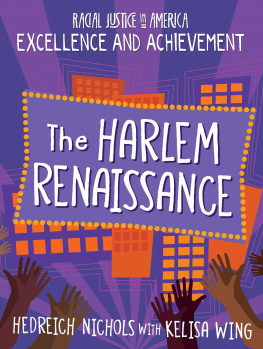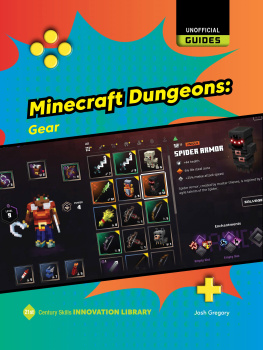Darlene Misconish - Amazing Animals: Alligators: Multiplication
Here you can read online Darlene Misconish - Amazing Animals: Alligators: Multiplication full text of the book (entire story) in english for free. Download pdf and epub, get meaning, cover and reviews about this ebook. year: 2018, publisher: Triangle Interactive, LLC, genre: Detective and thriller. Description of the work, (preface) as well as reviews are available. Best literature library LitArk.com created for fans of good reading and offers a wide selection of genres:
Romance novel
Science fiction
Adventure
Detective
Science
History
Home and family
Prose
Art
Politics
Computer
Non-fiction
Religion
Business
Children
Humor
Choose a favorite category and find really read worthwhile books. Enjoy immersion in the world of imagination, feel the emotions of the characters or learn something new for yourself, make an fascinating discovery.
- Book:Amazing Animals: Alligators: Multiplication
- Author:
- Publisher:Triangle Interactive, LLC
- Genre:
- Year:2018
- Rating:5 / 5
- Favourites:Add to favourites
- Your mark:
- 100
- 1
- 2
- 3
- 4
- 5
Amazing Animals: Alligators: Multiplication: summary, description and annotation
We offer to read an annotation, description, summary or preface (depends on what the author of the book "Amazing Animals: Alligators: Multiplication" wrote himself). If you haven't found the necessary information about the book — write in the comments, we will try to find it.
Amazing Animals: Alligators: Multiplication — read online for free the complete book (whole text) full work
Below is the text of the book, divided by pages. System saving the place of the last page read, allows you to conveniently read the book "Amazing Animals: Alligators: Multiplication" online for free, without having to search again every time where you left off. Put a bookmark, and you can go to the page where you finished reading at any time.
Font size:
Interval:
Bookmark:
0covercover.xhtmlAmazing Animals ALLIGATORS Multiplication Darlene Misconish Tylercover1page0001page0001.xhtmlMath Talk 1. What strategies can you use to find the product of two factors? 2. How is finding a missing factor different from finding a missing product? 3. How can estimation help you know if your answer is reasonable? 4. How can decomposing a multi-digit number by place value help you multiply? 5. Kevin wants to multiply 425 6 using mental math. What strategies should he use? Why? 6. When have you had to multiply numbers in real life? How was using multiplication helpful to you?22page0002page0002.xhtmlAmazing Animals ALLIGATORS Multiplication33page0003page0003.xhtml44page0004page0004.xhtmlTable of Contents Powerful Reptiles 4 Alligator Traits 8 Living the Wild Life 14 Hatchlings 16 Adults 20 Helping One Another 22 Doing Our Part 27 Problem Solving 28 Glossary 30 Index 31 Answer Key 3255page0005page0005.xhtmlPowerful Reptiles The air is hot and sticky. You sweat as you walk along a river in Florida. Suddenly, you hear a hiss from off to your left. As you peer through the tall grass surrounding the river, you see a pair of eyes flash in the water. You watch the alligator as you back away slowly. After a few steps, you hear a loud snap and you turn to run! American alligator66page0006page0006.xhtmlAlligators can be scary, but they are amazing creatures. There are two species of alligators in the world. American alligators are the largest reptiles in North America. Chinese alligators are smaller and can only be found along the Yangtze (YANG-SEE) River. Alligators are very powerful reptiles. Their size and strength are massive. They use their strong tails to defend themselves. Their tails also help them push through water. They use their teeth and powerful jaws to clamp down on prey. Their teeth are specially shaped to rip food into smaller chunks. But, they often choose to just swallow the prey whole! Chinese alligator77page0007page0007.xhtmlAlligators arent the only reptiles that live in water. Crocodiles lurk there, too. They look very similar at first glance. Most people cant tell them apart. But, they are different in many ways. First, alligators have U-shaped snouts. Crocodiles, on the other hand, have V-shaped snouts. Secondly, an alligators top jaw is wider than its bottom jaw. When its mouth is closed, you cant see any of its teeth. When a crocodiles mouth is shut, the teeth from its jaw stick out the sides of its mouth. Some people think this makes them look like they are smiling. Finally, the webbing on their back feet is also a clue. Crocodiles have much more webbing than alligators. Maybe you cant get close enough to check a crocodiles snout and feet. In that case, looking at the color of their bodies might help. Crocodiles tend to look lighter than alligators. But the color of the water they are in can change that. So, the easiest way to tell them apart might be where they live. Crocodiles can be found everywhere except Europe and Antarctica. But alligators are only found in North America and China. LET'S EXPLORE MATH Suppose that a scientist studying alligators knows there are about 238 alligators living in a nearby swampy area. If the alligator population doubles, how many alligators will there be?88page0008page0008.xhtmlcrocodile alligator99page0009page0009.xhtmlAlligator Traits Alligators may not live all over the world. But, they have been around for over 150 million years. That means they roamed the earth at the same time as dinosaurs! They have special traits that have helped them survive for such a long time. Many of these traits can be found on their heads. Adults have between 72 and 80 teeth at one time. As old teeth wear out, new teeth grow in. During its lifetime, an alligator can go through almost 3, 000 teeth. These teeth are used to rip and tear prey before swallowing. An alligators eyes, ears, and nose are on top of its head so it can search for its next meal at the waters surface. Alligators also have special valves in their throats called glottis valves. These close so they dont swallow water. This comes in handy when they drag land animals underwater to drown them. All of these traits combine to make alligators great hunters. But alligators do have one limitation. They can only live in freshwater. They do not have salt glands. This means they cannot filter salt from their bodies. So, ocean swimmers can rest easy knowing they wont spot an alligator coming toward them. An alligator opens wide, showing off its teeth and powerful jaws.1010page0010page0010.xhtmlAn alligator swims along the waters surface in Everglades National Park, Florida. LET'S EXPLORE MATH An American alligator can have up to 80 teeth in its mouth at one time. Complete the bar models to help you answer the questions. 1. If there are 3 alligators on a riverbank, how many teeth do they have in all? 2. If there are 2 times as many alligators along a lake as there are on the riverbank, how many teeth do they have altogether? 801111page0011page0011.xhtmlAn adult alligator reaches for a turtle. An alligator warms its body in the sun.1212page0012page0012.xhtmlOcean swimmers may not be on an alligators menu, but many other animals are. When alligators are young, they are not as strong. So, they can only eat things that are easy to catch. Young alligators eat bugs, fish, and frogs. As they get bigger, so does their food. Adults eat turtles, deer, and even other alligators. They use their strong jaws to crush bones. They can even crack the hard shells of turtles. Adults can digest anything they swallow. Alligators are cold-blooded creatures. This means their body temperature is based on how cold or hot it is around them. When they are cold, they rest in the sun. When they are hot, they dive deep into cold waters. They do not use energy from food to warm their bodies like mammals do. So, adults only need to eat about once a week in the wild. You definitely do not want to cross the path of a hungry alligator on feeding day!1313page0013page0013.xhtmlAlligators use their weight to help them hunt. American alligators can weigh up to 600 pounds (272 kilograms). The heaviest ever caught weighed over 1, 000 lbs. (454 kg). That is half of a ton! Scientists were stunned. They found a 100 lb. (45 kg) deer in its stomach. The alligator had swallowed it whole! Alligators are not only heavy. They are also long. Chinese alligators grow from 3 feet (1 meter) to 5 feet (1. 5 meters) long. American alligators are even bigger. They can be 6 ft. (2 m) to 12 ft. (4 m) long. The longest one on record was over 15 ft. (5 m)! The Stokes family from Alabama captured the largest alligator on record in 2014 15 feet and 9 inches! LET'S EXPLORE MATH Suppose two alligators eat 10 deer and 14 sheep each. How many animals have they eaten in all? Show two different ways to solve this problem.1414page0014page0014.xhtmlAn alligators tail alone is half of its total length. Alligators use their tails to help them catch prey. On land, they cannot run fast for very long. But in the water, their tails help them reach speeds of up to 20 miles per hour (32 kilometers per hour). Their tails also help them perform a move called the death roll. First, they bite into a large animal. Then, they spin in circles until a chunk rips off. Between death rolls, long bodies, and crushing weight, its no wonder that alligators have been around for so long! An alligator family glides through a river.1515page0015page0015.xhtmlLiving the Wild Life Alligators as a species have been around for millions of years. But alligators life spans are not nearly that long. An alligator in the wild can live for up to 50 years. Even though mothers stay with their young for at least six months, it is still dangerous in the wild. Eight out of every 10 alligators in the wild die young. But if they survive, they can defend themselves against most predators. In captivity, alligators can live to be 60 to 80 years old. They live longer since they are safer from threats. And, since humans feed them, they do not have to hunt for food. But in captivity, animals are kept in small spaces. They can get bored and lonely. There are good and bad sides to living in the wild. But there is one type of alligator that is better off living in zoos and farms. Rare white alligators find it hard to survive in the wild. The sun is harsh on their fair skin. And they are very easy for predators to spot. In fact, there are only 12 left on Earth!1616page0016page0016.xhtmlwhite alligator LETS EXPLORE MATH Imagine an alligator lived in the wild for 25 years and a rare white alligator lived in captivity for 75 years. How many times longer did the white alligator live? 1. Write a multiplication equation to represent the situation. Use a for the unknown factor. 2. Solve the problem and explain your answer. This white alligator lives in an enclosure to protect it from direct sunlight.1717page0017page0017.xhtmlHatchlings Alligators begin their lives in eggs. Many animals, such as adult alligators, eat eggs as part of their diet. So, it is up to the mother to protect them. Females start building nests in early summer. They build their nests with sticks, leaves, and mud to keep the eggs hidden and safe from predators. A female alligator protects her nest from predators.1818page0018page0018.xhtmlMothers cover the eggs and guard them for the next 70 days. The temperature of the nest controls whether the hatchlings will be male or female. Warmer nests often lead to males. Cooler nests often result in females. Females usually lay between 10 and 60 eggs at a time. But some lay up to 90 eggs! Mothers lay many eggs because other animals may steal and eat the eggs from the nest. Or, the mother might crush some eggs as she tries to defend them. And others might be swept away by floods. It is very hard for the mother to protect them all. alligator eggs1919page0019page0019.xhtmlBy the time the eggs are ready to hatch, the baby hatchlings have grown a tooth on top of their snouts. They use that tooth to crack open the egg. Then, they make a high-pitched chirping noise. This is their way of telling their mother they are ready to come out. The mother alligator clears off the top of the nest so they can make their way out. A hatchling emerges from an egg.2020page0020page0020.xhtmlAs they leave the nest, hatchlings move to the water with their mother. There, they live in pods, or small groups. Hatchlings start hunting the day they are born. They find easy prey in the water, such as insects, shrimp, and small fish. But it is a very dangerous time for them. They are still weak and easy for predators to catch and eat. Most of the young alligators will die before they reach adulthood. Alligator hatchlings hide in water plants in a Florida river.2121page0021page0021.xhtmlAdults Young alligators face many threats in the wild. But, some of them survive and become adults. Alligators live in rivers, lakes, swamps, and marshes. They like places where the water is murky. The dark water helps them sneak up on their prey. It also helps them hide from predators. There are over five million alligators living in the southern United States alone. Over a million of those live in Florida. You can spot them in many places. But, if you want to see one up close, the Everglades is the place to go. There, you can ride an airboat through the tall grass. And if you look down, you might just spot a pair of eyes peeking up at you. Tourists look for alligators as they ride an airboat in the Everglades.2222page0022page0022.xhtmlthe Everglades LET'S EXPLORE MATH Suppose there are 4 alligators living along a waterway in the Everglades. Each alligator weighs about 525 pounds. Complete the area model to show how much the alligators weigh altogether. 525 4 = ________ 4 500 + 4 20 + 4 52323page0023page0023.xhtmlHelping One Another Alligators can be both predator and prey. They are hunters and also hunted. Yet, humans are their biggest threat. Some people hunt them and sell their skin and meat. Humans have also ruined much of their habitat. When people build new homes on land, alligators have less space to live. Sometimes, they wander out of the water and enter cities. This can be very dangerous for people and small pets. A dog is no match for a hungry alligator! Some of them have even been caught climbing fences. That is not something most people want to see out their windows! Alligators used to be endangered. People thought they would become extinct. But the alligator population has grown in recent years. So, they are not in as much danger now. But we still need to help protect them. fried alligator alligator skin shoes2424page0024page0024.xhtmlLET'S EXPLORE MATH In the past, some alligator habitats were being destroyed at a rate of 105 square kilometers per year. 1. About how many square kilometers would be destroyed in 3 years? Estimate by rounding the number of square kilometers to the nearest hundred. Then, find an exact solution. 2. How many square kilometers would be destroyed after 7 years? Show your strategy for finding the solution. An alligator swims behind a neighborhood.2525page0025page0025.xhtmlA scientist extracts serum from alligator blood. A scientist draws blood from a baby alligator using a syringe.2626page0026page0026.xhtmlMost people wouldnt think of turning to an alligator for help when they are sick. They may not be doctors, but they can still help! Alligators have a liquid in their blood called serum. Scientists can remove this serum from their blood. This serum contains antibodies that help fight infections, germs, and diseases in humans. Scientists hope that one day they can turn the serum into pills or creams. They think that these pills and creams will help many people. They have tested the serum with some great results. Scientists think they can help heal burn victims, prevent diabetes, and even cure AIDS. But finding the right amount can be tricky. So far, they have found that too much of the serum can kill humans. So, they need to find the right mixture before it can be sold. But one day, alligator serum just might save human lives.2727page0027page0027.xhtmlA mother alligator guards her young.2828page0028page0028.xhtmlDoing Our Part Alligators are amazing animals. But, they can be dangerous. After all, they are predators. It is smart to be careful when near them. Any sudden movements will scare them. They will attack if they feel threatened. And no one wants to get caught in a death roll! Even though alligators are fierce predators, they still need to be protected. We can all do our part to help. It is best for humans to keep a safe distance from alligators. They need space to live in their habitats. That keeps both humans and alligators safe. This way, alligators can be around for millions of more years and can help humans in return!2929page0029page0029.xhtmlProblem Solving Mrs. Edwards is a zookeeper. It is her job to feed, house, and protect animals under her care. It is also her job to host field trips. She is getting ready to welcome some students to the alligator exhibit. After studying alligators at school, they are claiming to be experts! Mrs. Edwards plans to challenge their knowledge of alligator facts. Answer the questions to find out how you would measure up if you were one of the students.3030page0030page0030.xhtml1. Once alligators are about 48 inches long, they are safe from most predators. Hatchlings are about 6 inches long. How many times longer must hatchlings grow to reach this point? 2. In the wild, female alligators lay about 38 eggs each year. Due to predators and other threats, only about 24 of these eggs will hatch. How many eggs will a female lay in 9 years? How many of these eggs will hatch? 3. Four alligators in the zoo are fed about 6 times each month. They each eat about 6 pounds of food at every feeding. How many pounds of food will they eat in one month? 4. The zoo alligators are fed a steady diet. But in the wild, alligators can last for 2 years between feedings. How many days is this? (Hint : 1 year = 365 days) 5. Hatchlings weigh about 2 ounces. Adult alligators weigh about 8, 000 ounces. How many times larger is an adult than a hatchling? 6. Alligators can go through about 3, 000 teeth in a lifetime. How many teeth are the 4 zoo alligators expected to use in their lifetimes?3131page0031page0031.xhtmlGlossary airboat a flat-bottomed boat powered by a propeller antibodies proteins found in blood that help fight infections and diseases captivity the state of being kept in a place and not being able to leave endangered describing a plant or animal that has become very rare and could die out altogether extinct no longer existing glottis an opening between vocal cords in the throat habitat the type of place where a plant or animal naturally lives or grows hatchlings very young animals that have just come out of eggs murky very dark or foggy pods groups of animals predators animals that kill and eat other animals prey animals that are hunted and killed reptiles animals that have cold blood, lay eggs, and are usually covered with hard parts or scales serum a clear liquid found in blood that contains antibodies species groups of animals or plants that are similar and can produce young ton a unit of measure that equals 2, 000 lbs. (910 kg)3232page0032page0032.xhtmlIndex American alligator, Chinese alligator, crocodile, death roll, endangered, Everglades, extinct, Florida, glottis, nests, pods, predator, prey, reptile, species, teeth, traits, white alligator, Yangtze River,3333page0033page0033.xhtmlAnswer Key Lets Explore Math page 6 : 476 alligators; 238 2 = 476 page 9 : 1. 240 teeth; 80 3 = 240 2. 480 teeth; 80 6 = 480 80 80 80 80 80 80 80 80 80 80 page 12 : 48 animals; Examples : 2 (10 + 14) = 2 24 = 48; (2 10) + (2 14) = 20 + 28 = 48 page 15 : 1. 25 = 75 2. 3; Strategies will vary, but may include using a bar model to show that 3 groups of 25 is 75. page 21 : Area model shows product of 2, 100 lbs. ; 525 4 = 2, 000 + 80 + 20 = 2, 100 page 23 : 1. 100 3 = 300 sq. km; 105 3 = 315 sq. km 2. 735 sq. km; Strategies will vary, but may include using place value, area models, bar models, or equations. Problem Solving 1. 8 times 2. 342 eggs; 216 eggs will hatch 3. 144 lbs. 4. 730 days 5. 4, 000 times 6. 12, 000 teeth3434page0034page0034.xhtmlMath Talk 1. What strategies can you use to find the product of two factors? 2. How is finding a missing factor different from finding a missing product? 3. How can estimation help you know if your answer is reasonable? 4. How can decomposing a multi-digit number by place value help you multiply? 5. Kevin wants to multiply 425 6 using mental math. What strategies should he use? Why? 6. When have you had to multiply numbers in real life? How was using multiplication helpful to you?3535page0035page0035.xhtmlAmazing Animals ALLIGATORS Multiplication Snap! Splash! These are the sounds alligators make when they capture their prey. Their powerful jaws can crush the bones of even the largest animals. Power up your multiplication reasoning as you dive into the captivating world of alligators! Operations and Algebraic Reasoning36
Next pageFont size:
Interval:
Bookmark:
Similar books «Amazing Animals: Alligators: Multiplication»
Look at similar books to Amazing Animals: Alligators: Multiplication. We have selected literature similar in name and meaning in the hope of providing readers with more options to find new, interesting, not yet read works.
Discussion, reviews of the book Amazing Animals: Alligators: Multiplication and just readers' own opinions. Leave your comments, write what you think about the work, its meaning or the main characters. Specify what exactly you liked and what you didn't like, and why you think so.













